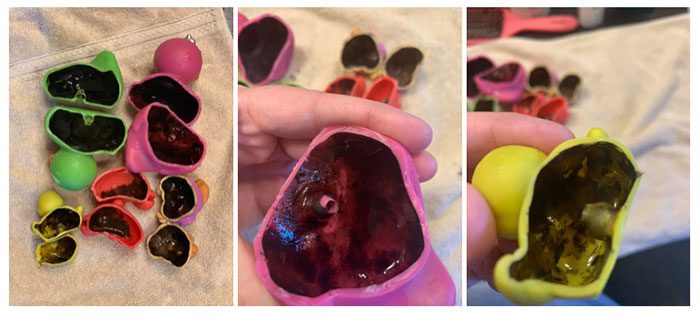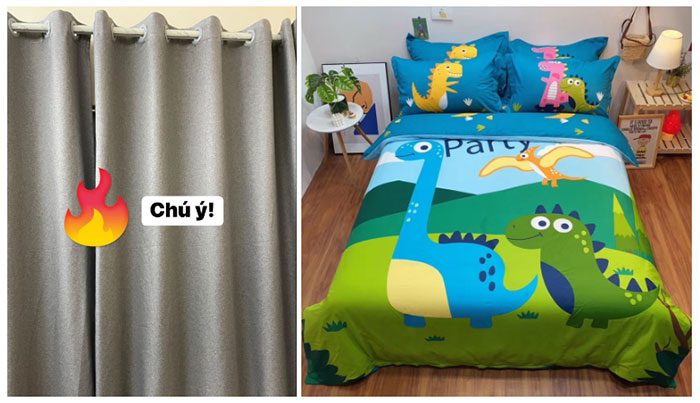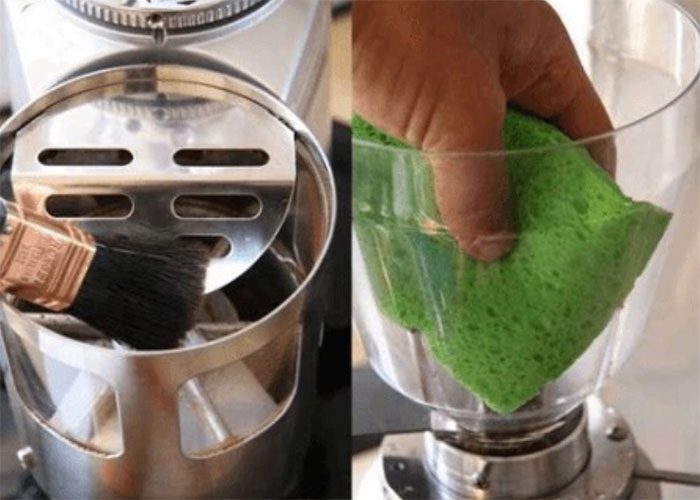Children have underdeveloped immune systems, making them more susceptible to illness. Many parents believe that taking their children out to play and exposing them to cold air increases their chances of getting sick. However, they often overlook the potential health risks that lurk within their own living spaces.
Bath Toys – A Breeding Ground for Bacteria and Mold
Almost every child has bath toys, whether it’s a few balls, a couple of rubber ducks, or giraffes. These are the toys children play with while bathing. Parents often think that bath toys are cleaner than other types of toys since they are submerged in water daily, leading many to neglect cleaning these small items during toy hygiene routines.
However, researchers have found that bath toys can harbor harmful bacteria because the warm and damp environment inside them is ideal for bacteria and mold to thrive. Specifically, scientists from the Swiss Federal Institute of Aquatic Science and Technology (EAWAG), the Swiss Federal Institute of Technology Zurich (ETH Zurich), and the University of Illinois conducted experiments with rubber ducks in warm water baths for 11 weeks.

When researchers cut rubber ducks in half to examine the inside, they discovered between 5 million to 75 million cells of mold and bacteria per cm², depending on experimental conditions. Among these was the potentially harmful bacterium Legionella (which can cause pneumonia).
According to the researchers, the materials used to make these toys consist of organic carbon compounds and low-quality materials. These materials can release contaminants into the water, which is unhealthy for children.

The warm and humid environment in the bathroom encourages the growth of these bacteria and mold. Every time children squeeze their rubber ducks to make them squeak, harmful particles are released, posing health risks. It’s not just the rubber ducks; other bath toys can also be detrimental to children’s health.
Curtains and Bed Sheets – Accumulating Dirt and Bacteria
One of the items children frequently come into contact with is their bed and curtains. They can play, run, hide, and finally sleep on their beds every night. The curtains collect dust everywhere. If regularly cleaned furniture still feels dirty, imagine how unkempt the curtains must be.
Curtains are frequently used; opening and closing them releases a lot of dust, mold, and allergens, making it easy for young children to develop ear, nose, and throat illnesses. It is best to clean them regularly, and during humid weather, mothers can wash and dry them immediately.

Regularly vacuum or shake out curtains and bed sheets to eliminate dust and allergens.
After a day of learning and playing, lying down on a clean bed and drifting off to sleep is a wonderful experience. However, if the bed sheets are dirty, they may become a habitat for dust mites. It is estimated that an average person sheds about 14 grams of dead skin cells each week, which can end up on bed sheets, providing food for dust mites.
Leftover waste and dust mite fragments on bed sheets can exacerbate conditions such as eczema, seasonal allergies, skin irritations, and many other problems. To avoid this, ensure that bed sheets are washed at least once a week with warm water at around 60 degrees Celsius.
Moldy Silicone in Baby Food Blenders
When babies reach the weaning stage, a blender becomes an essential item. However, if not cleaned properly, some components of the blender can easily develop mold, making them unsafe for use. Most blenders have a base with silicone that helps reduce noise and vibration. This makes the blender easy to use and ensures safety, giving parents peace of mind in any situation.
However, many mothers neglect to clean the blender parts, leading to mold and discoloration after prolonged use. This could be due to a humid environment, lack of sunlight, improper cleaning, or extended use.

Using warm water mixed with a bit of mild soap to soak and clean the parts.
Mold can produce harmful substances called mycotoxins that can cause allergic reactions and respiratory issues. Children exposed to mold may experience symptoms such as coughing, sneezing, nasal inflammation, sore throat, difficulty breathing, rashes, and other allergic reactions. In severe cases, mold can lead to chronic respiratory issues such as asthma or skin problems. To protect children’s health, it is crucial to maintain a clean, dry, and ventilated living environment and to eliminate mold sources quickly and safely.
How to Clean and Sanitize to Protect Children’s Health?
– To safely and effectively clean bath toys for children, follow these steps. First, focus on removing dirt and bacteria by soaking the toys in a solution of warm water mixed with a bit of mild soap or a cleaner specifically formulated for children’s toys. To ensure the toys are not damaged, check the labels and manufacturer’s instructions before cleaning.
Next, gently scrub with a soft brush or clean cloth to remove stubborn stains. Then, rinse the toys under warm water to eliminate all soap residue. Finally, place the toys on a tray or drying rack to dry completely before returning them to the child, avoiding any damp toys that could foster bacterial growth. If possible, use a disinfectant solution to wipe down the toys after they have dried to ensure the best sanitation. Regular cleaning is essential for safeguarding children’s health.
– Cleaning curtains and bed sheets is crucial for protecting children’s health and preventing frequent illnesses. First, carefully read the manufacturer’s instructions for washing and maintaining to avoid damaging the materials. Regularly vacuum or shake out curtains and bed sheets to remove dust and allergens. When washing, use warm water and a mild detergent, avoiding strong chemicals that could harm children.
If curtains and bed sheets are machine washable, choose a gentle wash cycle and use detergent suitable for sensitive skin. After washing, air dry them completely before reuse. For curtains, you may need to iron them while they are still slightly damp to keep them looking neat. Additionally, regularly cleaning and sanitizing other surfaces and items in the room also helps reduce the risk of illness for children.
– To properly clean baby food blenders and silicone parts to avoid mold, follow these steps. First, disassemble the removable parts of the blender, including the silicone part. Use warm water mixed with a bit of mild soap to soak and clean the parts. For the silicone component, ensure that you clean thoroughly to remove any small food particles that may have stuck. A soft brush or cloth can be used to gently scrub and reach every nook and cranny.
After scrubbing, rinse the parts with clean water to remove all soap residue. For drying, place the parts on a tray or drying rack with ample airflow to air dry naturally, or you can use a clean towel to dry them. Ensure that the silicone and other parts are completely dry before reassembling to prevent mold growth.
If the baby food blender and silicone parts can withstand high temperatures, you can sterilize them by boiling or using a special sterilizer for baby products. This cleaning should be done regularly after each use to ensure safety and hygiene for your child.



















































